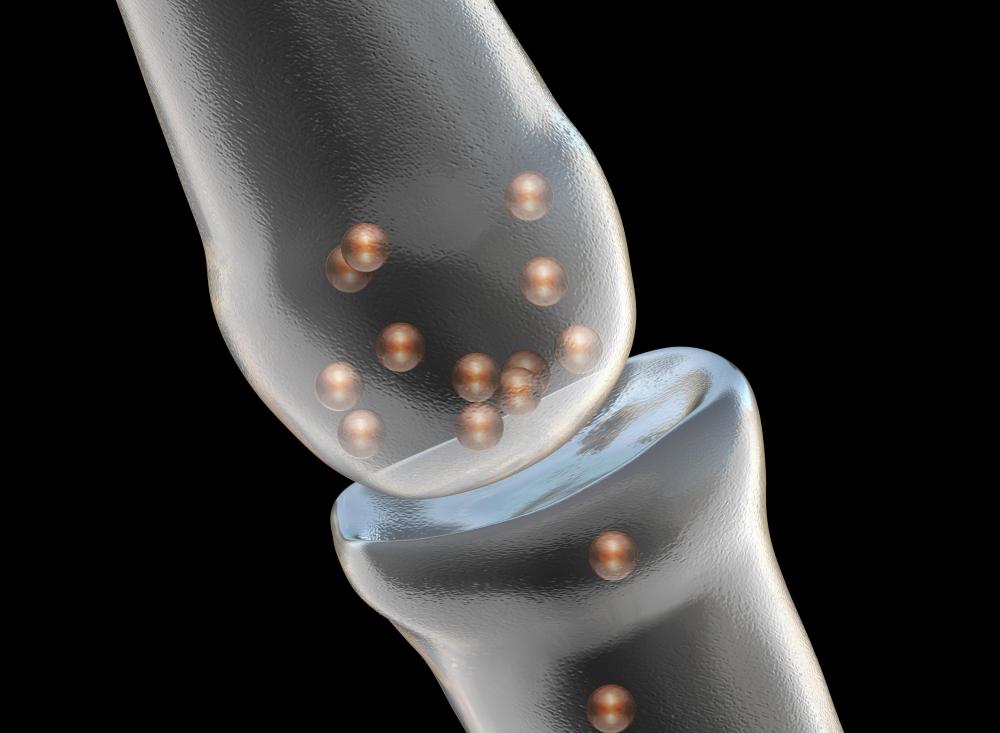At TheHealthBoard, we're committed to delivering accurate, trustworthy information. Our expert-authored content is rigorously fact-checked and sourced from credible authorities. Discover how we uphold the highest standards in providing you with reliable knowledge.
What Are the Functions of Motor Nerves?
The primary function of motor nerves is the carrying of signals from the brain to various muscles, organs, and glands in the body. In general, the nerves in the human body can be divided into two broad types: sensory and motor. While sensory nerves handle primarily feelings like pain or temperature, those designated "motor" deal almost entirely with voluntary muscle movements and reflex actions. The signals they carry usually have immediate effects; sometimes, these effects are very obvious, as is the case with physical movement, but other times, like organ retraction or expansion, it isn’t as easy to see externally. Commands for muscle movements typically originate in the brain and travel to their destinations across a complex series of pathways. Damage or degeneration to these nerves often manifests as spasms, muscle weakness, or physical wasting.
Origin and Pathways

The brain and spinal cord are known together as the central nervous system (CNS), and together this system houses and channels all nerve signals throughout the body. Motor nerves originate in the brain and take a two-part path down the spinal column. Upper motor neurons are called “first order neurons,” meaning that they are contained completely within the CNS.

Signals from the first order neurons cross a gap called a synapse to reach the lower motor neurons, the so-called “second order neurons” that extend from the brain stem down to the body muscles. Motor neurons terminate in short dendrites and transmit their messages through a long axon. They operate oppositely to sensory nerves, which have short axons and receive their messages from long dendrites.
Nerve Impulses and Transmissions
Nerves in the motor category are efferent, which means that they carry impulses from the nervous center outward. They are distinct from sensory nerves, which supply the brain with information from other parts of the body about matters concerning sensations like touch, temperature, and pain. They are also distinct from cranial nerves, which can be either sensory, motor or both. Motor nerves pair with sensory nerves in the spinal column to form 31 pairs of mixed nerves.
These nerves connect to all of the body’s tissues, glands, organs, and muscle groups. When the brain sends out commands, impulses travel across the system’s neurons and activate programmed receptors in the target location. Of course, a lot goes into big movements like leg kicks and arm raises, as well as smaller movements like lung contraction. Nerves are usually responsible for at least the stimulation that sets the movement in action, though, and this movement is the main function of those in the “motor” category.
Response Times
One of the most notable things about these nerves is that they can respond to inputs from the sensory nerves without input from the brain. The spinal column allows motor neurons to move muscles in response to sensory messages. These automatic responses are called reflexes, and they do not require input from the brain. Reflex actions allow the body to react to dangerous situations quickly. For instance, they cause muscles to pull back from a heat source before the brain has had time to process the pain.
Diagnosing and Treating Nerve Damage
Injuries and trauma often injure various parts of the nervous system, though these sorts of damages can often take a lot of time to both notice and diagnose. Certain degenerative conditions, like Multiple Sclerosis and Amyotrophic lateral sclerosis, also known as Lou Gehrig's disease, can also cause a weakening of the sheath protecting motor and other nerves that can weaken and ultimately impair signal reception and transmission over time.
Damaged motor nerves can often be detected when they cause muscles to atrophy or when they produce twitching movements. Neurologists will often observe how a patient walks and completes general “big muscle movements” in order to obtain clues about overall nervous system functioning. Nerve function can often be monitored by recording the electromyograph potentials of the muscles they control. Lesions to the upper motor neurons are responsible for cerebral palsy.
There isn’t always an effective treatment to reverse damage that has already been done. Sometimes, nerves can be repaired if they’ve been severed or damaged cleanly in an accident — but not always. More often, treatments seek to prevent further degeneration and damage, and often include therapies to strengthen impacted muscles and fortify them against wasting.
AS FEATURED ON:
AS FEATURED ON:












Discuss this Article
Post your comments